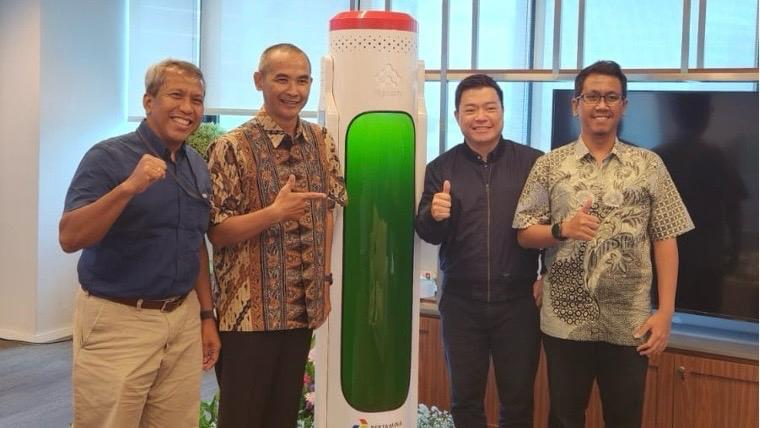
Researchers from the UGM Center for Energy Studies (PSE UGM), part of the University’s Microalgae Biorefinery Center of Excellence, have developed an innovative solution using microalgae to absorb carbon in industries.
PSE UGM introduced Algaetree and Algaerium, a microalgae cultivation system within a modified photobioreactor designed to optimize the absorption of carbon dioxide from the environment and surrounding air.
Dr. Nugroho Dewayanto highlighted that one of the major challenges industries face today is the obligation to reduce carbon emissions from their business operations. Various industries have developed multiple methods for carbon capture, utilization, and storage (CCUS) programs.
“To develop Algaetree and Algaerium, we collaborated with PT Enthalphy Environergy Consulting, specializing in ESS (Environmental, Social, and Governance) consulting, and PT Algatech Nusantara, which focuses on microalgae product and business development,” explained Professor Arief Budiman, a researcher at PSE UGM, in an interview on Wednesday, Feb. 19, 2025.
This collaboration between UGM and the two companies resulted in the creation of Microforest, an advanced version of Algaetree.
Microforest enhances Algaetree with a futuristic design and additional features such as carbon dioxide absorption and oxygen generation displays.
With a cultivation capacity of 100 liters, Microforest can absorb up to 37.6 kilograms of carbon per year, equivalent to the carbon absorption of four mature trees.
Another researcher, Dr. Eko Agus Suyono, stated that Microforest is functional and aesthetically pleasing, making it suitable for indoor use or in building lobbies.
Its ability to absorb carbon dioxide and produce oxygen in locations where plants cannot grow and its minimal space requirements make it an ideal solution for sustainability.
“Currently, Microforest technology has received positive responses from various industries looking to implement decarbonization efforts to strengthen their ESG (Environmental, Social, Governance) commitments,” he said.
One company interested in using Microforest is PT Pertamina EP Cepu Regional 4, which manages Pertamina’s exploration activities in Eastern Indonesia.
In addition to Microforest, PT Pertamina is also interested in using Oxyflow, a further development of Algaerium.
Through an agreement with Microalgae Biorefinery, PT Pertamina will install five units of Microforest and Oxyflow at their headquarters in Patra Jasa Office Tower, Jakarta.
PT Pertamina EP Cepu Regional 4 hopes this partnership will position them as a leader in Pertamina’s decarbonization efforts using natural approaches, complementing the CCUS technology they have begun implementing.
Professor Budiman mentioned that the collaboration with PT Pertamina EP Cepu Regional 4 will last two years, with operational support from PT Algatech Nusantara.
He hopes he and his fellow researchers can continue developing microalgae-based innovations, allowing more industries to incorporate them into their sustainability strategies to support Indonesia’s commitment to carbon neutrality by 2060.
Author: Triya Andriyani
Post-editor: Lintang
Photograph by: PSE UGM

